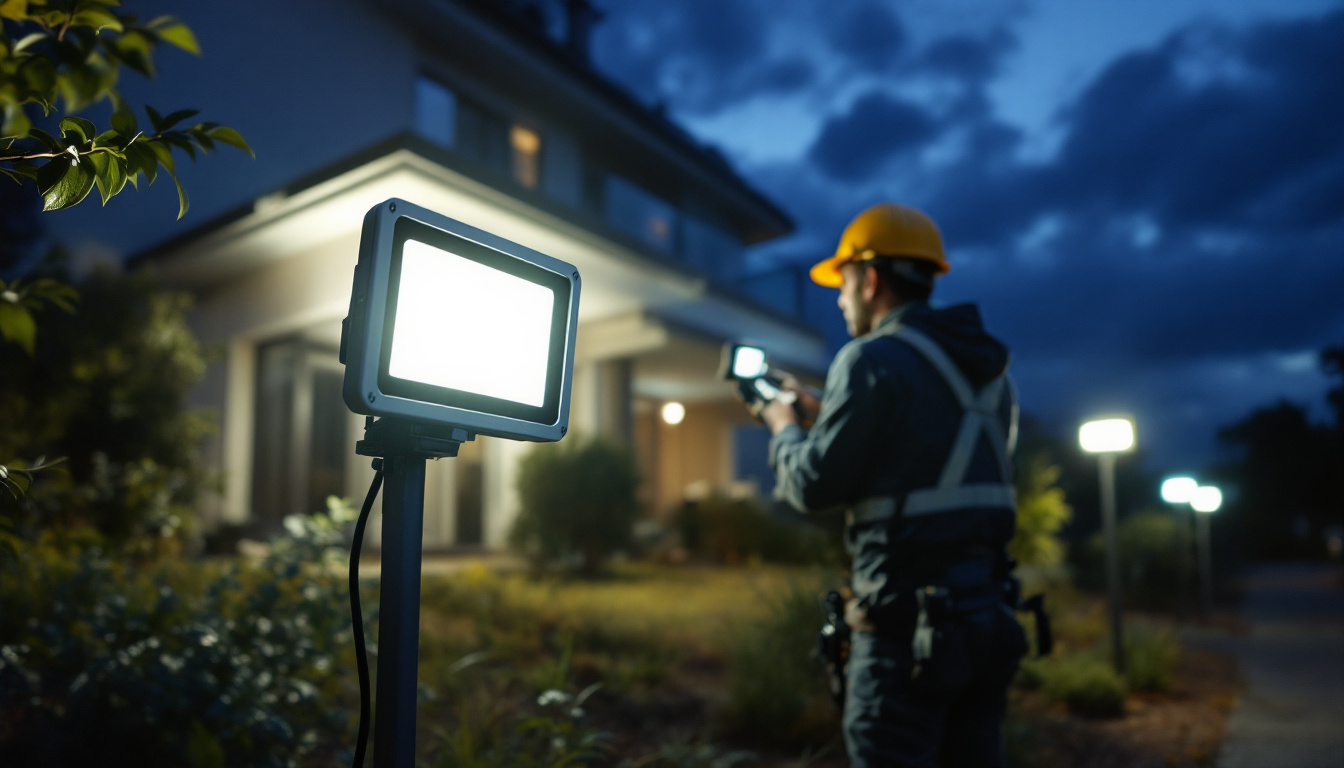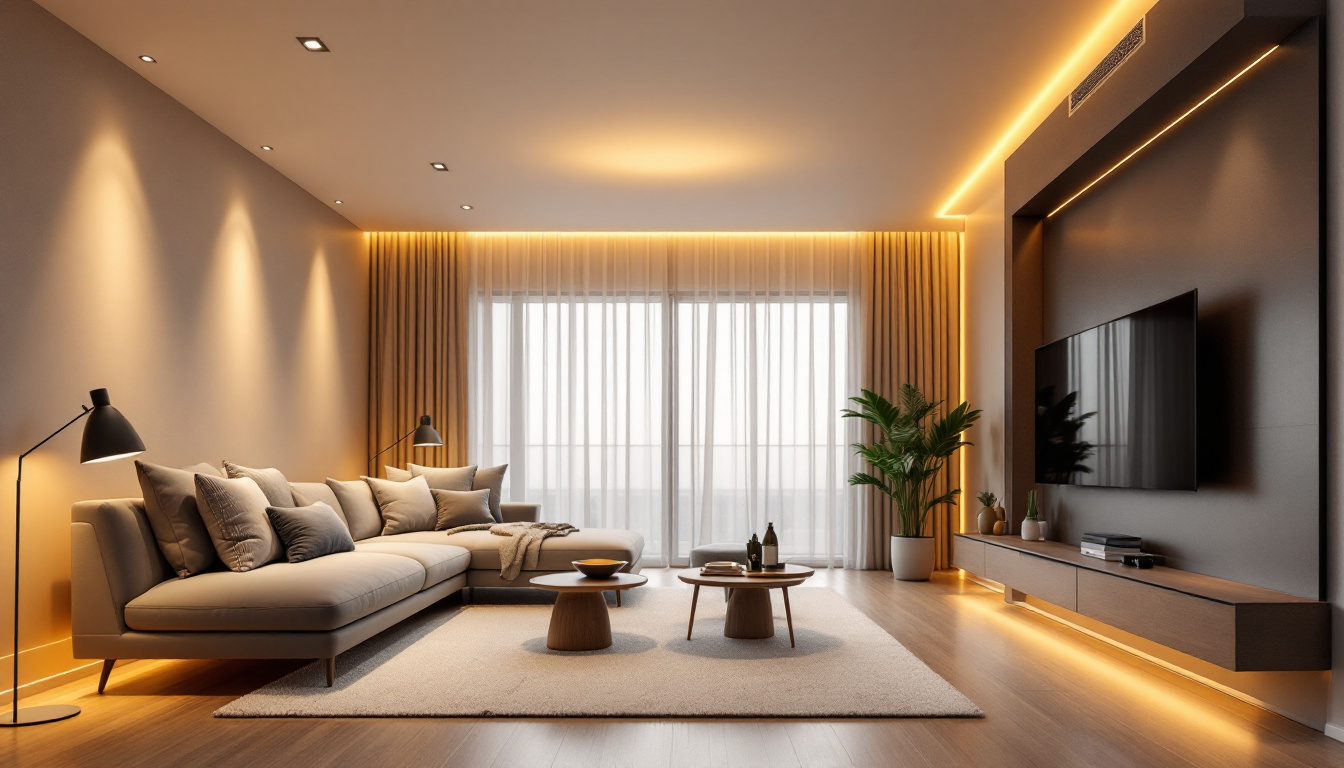
In recent years, the lighting industry has witnessed a significant transformation, primarily driven by the advent of LED (Light Emitting Diode) technology. This innovation has not only redefined energy efficiency but has also opened new avenues for design and application. As the demand for sustainable and cost-effective lighting solutions continues to rise, understanding the implications of LED technology becomes essential for lighting contractors.
LEDs have emerged as a preferred choice for various applications, ranging from residential spaces to large-scale commercial projects. Their ability to provide bright illumination while consuming minimal energy has made them a game-changer in the industry. Moreover, the longevity of LED lights reduces maintenance costs, making them an attractive option for contractors and clients alike.
One of the most compelling aspects of LED technology is its versatility. LEDs are available in a wide range of colors and can be easily integrated into smart lighting systems, allowing for customizable lighting experiences. This adaptability not only enhances aesthetic appeal but also contributes to energy savings through features like dimming and color temperature adjustments. For instance, in a retail environment, the ability to change lighting according to the time of day or season can significantly influence customer behavior and enhance the shopping experience.
Furthermore, the environmental impact of LED technology cannot be overstated. Unlike traditional incandescent and fluorescent lights, LEDs do not contain harmful substances such as mercury, making them a safer choice for both consumers and the planet. Their lower energy consumption translates to reduced greenhouse gas emissions, aligning with global sustainability goals. As cities and municipalities increasingly adopt energy-efficient lighting solutions, the role of LED technology in urban planning and development becomes increasingly pivotal, paving the way for smarter, greener cities.
One of the most compelling advantages of LED lighting is its energy efficiency. Traditional incandescent bulbs convert a significant portion of energy into heat rather than light, while LEDs utilize nearly all the energy for illumination. This efficiency translates into lower electricity bills for consumers and reduced environmental impact.
For lighting contractors, promoting energy-efficient solutions can enhance their value proposition. Clients are increasingly seeking ways to reduce operational costs, and LED lighting provides a straightforward solution. By incorporating LED technology into projects, contractors can help clients achieve significant savings over time.
LED lights are known for their impressive lifespan, often lasting up to 25,000 hours or more. This longevity means that clients will spend less on replacements and maintenance, which is a significant selling point for contractors. Additionally, LEDs are more durable than traditional bulbs, as they are less susceptible to breakage and can withstand various environmental conditions.
For outdoor applications, such as street lighting or landscape illumination, the durability of LEDs is particularly advantageous. Contractors can confidently recommend LED solutions knowing that they will perform well in diverse weather conditions, reducing the frequency of replacements and repairs.
Another notable advantage of LED technology is its design flexibility. LEDs are available in various shapes, sizes, and colors, allowing for creative and innovative lighting designs. This versatility enables contractors to cater to a wide range of client preferences and project requirements.
From sleek and modern fixtures to vintage-inspired designs, the adaptability of LED lighting can enhance the aesthetic appeal of any space. Contractors can leverage this flexibility to create unique lighting solutions that align with their clients’ visions, setting their services apart in a competitive market.
The environmental benefits of LED lighting cannot be overstated. With growing concerns about climate change and sustainability, the lighting industry is under pressure to adopt greener practices. LEDs are a crucial part of this transition, as they consume less energy and have a lower carbon footprint compared to traditional lighting options.
Moreover, LEDs do not contain hazardous materials like mercury, which is commonly found in fluorescent bulbs. This makes them a safer choice for both consumers and the environment. By choosing LED lighting, contractors can contribute to a more sustainable future while meeting the increasing demand for eco-friendly solutions.
As governments and regulatory bodies implement stricter energy efficiency standards, the importance of LED technology becomes even more pronounced. Many regions are phasing out incandescent and fluorescent bulbs in favor of more efficient alternatives. For lighting contractors, staying ahead of these regulations is essential to remain competitive and compliant.
By incorporating LED solutions into their offerings, contractors can ensure that their projects meet current and future regulations. This proactive approach not only helps avoid potential penalties but also positions contractors as leaders in sustainable lighting practices.
In residential settings, LED lighting has gained immense popularity due to its versatility and energy efficiency. Homeowners are increasingly opting for LED solutions in various applications, including ambient, task, and accent lighting. From kitchen under-cabinet lights to outdoor landscape fixtures, LEDs can enhance the functionality and aesthetics of any home.
Contractors can play a pivotal role in educating homeowners about the benefits of LED lighting. By showcasing the long-term savings and design possibilities, contractors can help clients make informed decisions that align with their lifestyle and preferences.
In commercial and industrial settings, the advantages of LED lighting are even more pronounced. Businesses are continually seeking ways to reduce operational costs and improve energy efficiency. LED lighting solutions can significantly lower energy consumption, resulting in substantial savings for companies.
Moreover, the ability to customize LED lighting systems for specific applications—such as warehouse lighting, office spaces, or retail environments—allows contractors to provide tailored solutions that meet the unique needs of each business. This adaptability can lead to increased client satisfaction and long-term partnerships.
Outdoor and street lighting is another area where LED technology has made a significant impact. With their durability and energy efficiency, LEDs are ideal for illuminating streets, parks, and public spaces. Many municipalities are transitioning to LED streetlights to reduce energy costs and improve safety.
For contractors involved in public works projects, understanding the benefits of LED street lighting is essential. By advocating for LED solutions, contractors can contribute to safer, more sustainable communities while also enhancing their reputation as forward-thinking professionals.
Despite the numerous advantages of LED lighting, some contractors may encounter challenges related to initial costs. While the long-term savings associated with LEDs are significant, the upfront investment can be higher than traditional lighting options. This can be a barrier for some clients who are hesitant to make the switch.
Contractors can address these concerns by providing comprehensive cost-benefit analyses that highlight the long-term savings and reduced maintenance costs associated with LED lighting. By educating clients about the return on investment, contractors can help alleviate concerns about initial expenses.
The rapid pace of technological advancements in the LED industry can also pose challenges for contractors. New products and innovations are continually emerging, making it essential for contractors to stay informed about the latest developments. This knowledge is crucial for providing clients with the most effective and up-to-date solutions.
Contractors can stay ahead of the curve by participating in industry training, attending trade shows, and engaging with manufacturers. By fostering relationships with suppliers and staying informed about advancements, contractors can enhance their expertise and offer clients the best possible solutions.
The future of LED lighting is closely intertwined with the rise of smart technology. Smart lighting systems, which allow users to control their lighting through mobile apps or voice commands, are becoming increasingly popular. These systems often incorporate LED technology, providing energy-efficient solutions that can be customized to individual preferences.
For lighting contractors, embracing smart lighting solutions can open new opportunities for innovation and client engagement. By offering smart LED options, contractors can position themselves as leaders in the evolving lighting landscape, catering to tech-savvy clients who seek convenience and efficiency.
Another emerging trend in the lighting industry is the concept of human-centric lighting. This approach focuses on creating lighting environments that enhance well-being and productivity. By utilizing LEDs that can adjust color temperature and intensity based on the time of day, contractors can help clients create spaces that promote health and comfort.
As awareness of the impact of lighting on human behavior grows, contractors who specialize in human-centric lighting solutions will be well-positioned to meet the needs of clients seeking to improve their environments. This trend emphasizes the importance of understanding the psychological and physiological effects of lighting, making it a valuable area of expertise for contractors.
The growing importance of LED lighting in the industry cannot be overstated. With its energy efficiency, longevity, design flexibility, and environmental benefits, LED technology has become a cornerstone of modern lighting solutions. For lighting contractors, embracing this technology is not just a matter of keeping up with trends; it is essential for meeting client demands and contributing to a sustainable future.
As the industry continues to evolve, staying informed about advancements and emerging trends will be crucial for contractors. By positioning themselves as knowledgeable and adaptable professionals, contractors can thrive in a competitive market while delivering exceptional value to their clients. The future of lighting is bright, and LED technology will undoubtedly play a pivotal role in shaping that future.
Ready to harness the power of LED technology for your next project? At LumenWholesale, we provide lighting contractors with the highest quality, spec-grade LED lighting products at unbeatable wholesale prices. Say goodbye to local distributor markups and hello to our extensive selection that meets rigorous industry standards. With free shipping on bulk orders, you can trust that you’re getting premium lighting solutions at the best value, without any hidden fees. Elevate your lighting game and experience the perfect blend of quality, affordability, and convenience. Visit LumenWholesale today and make the smart choice for your lighting needs.

Discover how understanding and addressing light bulb flickering can give lighting contractors a competitive edge in winning more bids.

Discover why solar LED flood lights are becoming a game-changer for lighting contractors.

Discover how contemporary recessed lighting can transform your home while boosting the efficiency of your lighting projects.

Discover why the 15 Watt Type B bulb is a staple for lighting contractors.